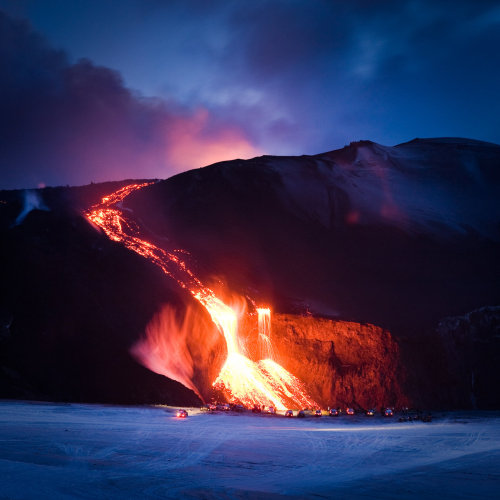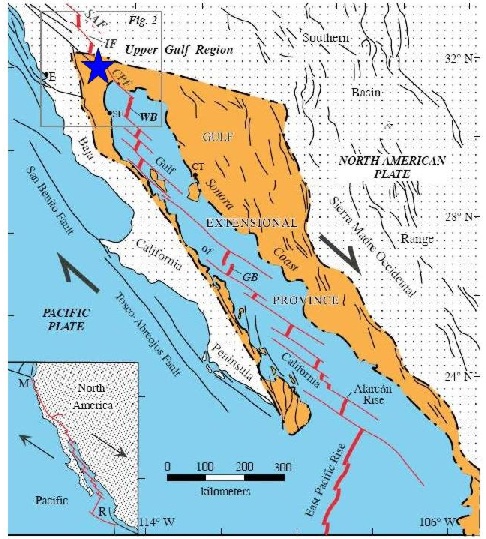Miscellaneous thoughts on politics, people, math, science and other cool (if sometimes frustrating) stuff from somewhere near my favorite coffee shop.
Saturday, April 10, 2010
Slosh!
And Not Only That
 (Skull Swap)
(Skull Swap) (EpicPonyz) He's a seriously badass collection of organic molecules. I love it when related things come up in different places for no apparent reason other than to amuse me. Speaking of which, this is another collection of organic molecules that needs to happen:
(EpicPonyz) He's a seriously badass collection of organic molecules. I love it when related things come up in different places for no apparent reason other than to amuse me. Speaking of which, this is another collection of organic molecules that needs to happen: (The Daily What) I'd call it a Tyrannitauricorn.
(The Daily What) I'd call it a Tyrannitauricorn.
April 10, 1980
 USGS Photograph taken on April 10, 1980, by Tom Casadevall (from the NE)
USGS Photograph taken on April 10, 1980, by Tom Casadevall (from the NE) USGS Photograph taken on April 10, 1980, by Tom Casadevall (also from the NE)
USGS Photograph taken on April 10, 1980, by Tom Casadevall (also from the NE)Both of the above from the USGS pre-May 18 photo archive. From the pre-eruption chronology at The Mount St Helens National Volcanic Monument web page,
April 10 - Weather cleared to permit aerial observations of continued explosions from a circular vent about 30 feet across in the western part of the crater. Harmonic tremor was detected for the first time in three days.Emphases in the above passage are mine. One of the aspects of pre-eruption events that is difficult to express in view of 20-20 hindsight was just how mundane it started to seem to non-geologists. I particularly recall the indignation of those involved in the timber industry, who felt they were unfairly- even illegally- being denied access to their livelihood. I felt a certain sympathy for their point of view, but at the same time, had a hard time comprehending how they could be so eager to rush toward a potential bomb. But as time went on, the constant complaining about the costs of maintaining the road blocks, and the forgone costs of shutting down the largest source of income in the area, became more and more compelling to those of us in the public with, shall we say, a certain degree of geological innocence. From here:
Steve Malone of the University of Washington reported that there had been 101 earthquakes with magnitudes larger than 4.0 since March 27.
The Cost of an Eruption - Explosions and earthquakes had settled into a monotonous pattern with no end in site. Mounting expenses began to affect the level of monitoring and maintenance of roadblocks.
Since March 20 the USFS estimated expenditures at $157,000. Skamania and Cowlitz Counties had spent $17,000 and $10,000, respectively, for their part in maintaining the roadblocks leading to the mountain.
The National Guard estimated costs of $3,800 per day since April 5 for their part in staffing roadblocks. Washington State Patrol spent over $5,000 for their part of this effort.
In order to reduce costs, the USFS grounded both observer planes, but kept one on standby in the event of an eruption. They also closed the press center at the Shilo Inn, ending twice daily briefings. Days before the USGS had reduced the number of scientists monitoring the volcano from 30 to between 5 and 10.
On April 10, residents and workers were allowed to return home after signing a release, which stated they knew the risks and accepted responsibility for their own safety. That same day Mount St. Helens erupted sending steam and ash fifteen thousand, five hundred feet above sea level. By this time the bulge was three hundred and twenty feet high.While I'm drawing much of the meat of these posts from available online sources, and it is difficult for me to recall, 30 years later, exactly what was going through my head on what date, I firmly remember that late April and May, up to the eighteenth, were, frankly, dull. It seemed like the same thing, over and over and over. Comparison of old photos to recent ones showed the north-side bulge distracting from the mountain's former symmetry. And as days went on, it became even more lumpy than before. It seems odd, in retrospect, to claim that what was to become one of the most important US geological events of the 20th century was preceded by a growing sense of boredom and apathy. A sense that what were, in retrospect, trivial expenditures to keep people out of harms way became so onerous that public officials chose to quit making those expenditures. But that's what I remember; while I had avidly been locating and reading as much as I could find up to this point, the mountain was becoming more monotonous background noise than something of real interest.
I would probably not be spoiling the ending of this story by linking Ron Schott's gigapan of the volcano. This looks like it was taken from near Windy Ridge, above Spirit Lake, NE of the mountain.
This is part 7 in a multi-part series on the events leading up to the catastrophic eruption of Mt. St Helens on May 18th, 1980, 30 years ago this spring. Part 1, Part 2, Part 3, Part 4, Part 5, Part 6.
Friday, April 9, 2010
Hot Rocks
This is actually a series of clips, some of which are quite short, and it's a little jarring sometimes in the way it flicks from one scene to another. There were a number of things that held my attention, though; the silvery sheen on the freshly cooled surface is striking. I've looked at an awful lot of basalt in my time, but none this fresh. I'm guessing it's a glassy surface thing, a very thin patina that weathers off quickly, exposing the dull black that I associate with that rock. Another thing that had me thinking was trying to picture how these forms would look in later outcrop, or conversely, how I could look at a pile of older basalt in cross section and puzzle out the progression and form of the flow that created it. And finally, the inflation of flows followed by fresh break-outs reminds me that "rivers of fire" are the exceptions, and not really typical. In pahoehoe-type flows, most of the flow is in the interior under a cooled and hardened crust. Fresh lava regularly breaks out around the snout, but exposed incandescent fluid is actually only a small portion of an active flow.
Gorgeous.
Thursday, April 8, 2010
The Dangers of E-Waste Disposal
Wednesday, April 7, 2010
Old Aerial Photos

Map view of elevation changes (in feet) on the north flank of Mount St. Helens between August 1979 and April 7, 1980. Dashed line outlines the May 1980 crater. Red contours are negative values, blue contours are positive values (figure modified from USGS Professional Paper 1250, p.126).(From the chronology at the Mount St. Helens Volcanic Monument web page) No, what really grabbed my attention was that behind the clouds of the last few days, the formerly two discrete summit craters had merged into one enormous, gaping, hole.
 (USGS Photograph taken on April 7, 1980, by Peter Lipman, from the USGS pre-eruption photo archive.)
(USGS Photograph taken on April 7, 1980, by Peter Lipman, from the USGS pre-eruption photo archive.) (USGS Photograph taken on April 6, 1980, by James G. Moore, from the USGS pre-eruption photo archive.) To me, at least, this was really starting to look like a real volcanic eruption, not just indigestion. Again referring to the pre-eruption chronology, it is stated that
(USGS Photograph taken on April 6, 1980, by James G. Moore, from the USGS pre-eruption photo archive.) To me, at least, this was really starting to look like a real volcanic eruption, not just indigestion. Again referring to the pre-eruption chronology, it is stated thatWhen the new (1980) map was compared to the old map, it showed that parts of the north flank had moved outwards by over 300 feet! Although the aerial photos were taken on April 7, the new data on the bulge was not available to scientists until April 23.And today's entry:
April 7 - The crater's dimensions measured approximately 1700 feet long by 1200 feet wide and 500 feet deep. Scientists obtained their first clear view of the vent at the bottom of the deepest part of the crater. A single circular "throat" about 20 feet in diameter was visible.
They also reported the first observations of substantial ponding of water. Two pools of muddy water large enough to float chunks of ice disappeared with each explosion then returned as more water accumulated after the explosion subsided.
The overall seismicity remained about the same and harmonic tremor was recorded for the first time in two days. Earthquakes were centered beneath the north slope at depths ranging from one half to three miles. USGS scientists installed a new tiltmeter at the Timberline Viewpoint.
While I know that the region's newspapers were talking about the bulge, and even a generally geo-ignorant person such as myself could see the changes in shape in the before and after pictures, I don't think most of us in the general public really perceived the magnitude of the mountain's expansion. And I know we (the public, that is) didn't perceive the danger inherent in oversteepening a mountainside over a fresh, hot magma chamber.
I just tracked down a tidbit of information I've been watching for; contrary to a point I made in a previous post,
Reexamination of ash samples from several precursory events shows that small amounts of juvenile material were erupted as early as 28 March 1980, just two weeks after the first seismic signals of reawakening, and that the juvenile content of the ash had probably increased by early May. The magmatic component of these eruptions was not recognized at the time because of the high crystallinity of the juvenile material—a signature of extensive degassing-induced crystallization during magma ascent.K.V. Cashman and R.P. Hoblitt, Geology; February 2004; v. 32; no. 2; p. 141-144; DOI: 10.1130/G20078.1
This is part 6 in a multi-part series on the events leading up to the catastrophic eruption of Mt. St Helens on May 18th, 1980, 30 years ago this spring. Part 1, Part 2, Part 3, Part 4, Part 5.
Wednesday Wednesday
 From The Unofficial Addams Family Movie Sights Page, and continuing the apparent tradition of including a quote with these silly pictures, [when asked about her Halloween costume] "I'm a homicidal maniac- they look just like everyone else." (from Wikiquotes)
From The Unofficial Addams Family Movie Sights Page, and continuing the apparent tradition of including a quote with these silly pictures, [when asked about her Halloween costume] "I'm a homicidal maniac- they look just like everyone else." (from Wikiquotes)
Tuesday, April 6, 2010
I Never Thought I'd Say This
And here's the Reuters initial coverage.
Update, 5:08 PM PDT: The Washington Post has also run the Reuters story, with some additional info, and the following map. This looks likely to be a subduction quake like the 2006 Boxing Day quake, though much smaller. Tsunami warnings have been issued; the WaPo story says people in some areas headed toward higher ground. The undertone in what I've read so far suggests that the tsunami risk is seen as lower with this one. Still, it's reassuring to see that people know to head to higher ground without being told.
 Update, 5:51: AP chimes in, and Reuters has an update saying the tsunami watch has been canceled. Electricity is out in some areas, but it doesn't sound as if the damage is too bad.
Update, 5:51: AP chimes in, and Reuters has an update saying the tsunami watch has been canceled. Electricity is out in some areas, but it doesn't sound as if the damage is too bad.
It Angers The Mountain
 Release the Hell Hound!
Release the Hell Hound! (Epic Win) I'm assuming the above photos are from the ongoing eruption at Fimmvörduháls Pass in Iceland. (I have previously identified this as the "Eyjafjallajökull" volcano; that name more properly refers to the ice sheet to the west of the volcano.) There have truly been some spectacular pictures from this eruption. While there is potential for the fissure to extend farther and cause serious problems, thus far it's been active enough to be a real show, but gentle enough to allow people to get up close and personal.
(Epic Win) I'm assuming the above photos are from the ongoing eruption at Fimmvörduháls Pass in Iceland. (I have previously identified this as the "Eyjafjallajökull" volcano; that name more properly refers to the ice sheet to the west of the volcano.) There have truly been some spectacular pictures from this eruption. While there is potential for the fissure to extend farther and cause serious problems, thus far it's been active enough to be a real show, but gentle enough to allow people to get up close and personal.Ole Nielsen, at the always-fascinating Olelog, posted an excellent summary of events a couple of days ago. If you are uncertain whether you understand the broad setting and the potential danger from an increased eruptive scale, I can't recommend that post highly enough.
 NASA's Earth Observatory posted a new satellite image of the area yesterday. Note that north is to the right, not the traditional top, in this image. (The full-size image can be seen here, and an older image here.) Geology Rocks posted this picture of a lavafall (Click for full size at Flickr: Those are cars parked around the base!)
NASA's Earth Observatory posted a new satellite image of the area yesterday. Note that north is to the right, not the traditional top, in this image. (The full-size image can be seen here, and an older image here.) Geology Rocks posted this picture of a lavafall (Click for full size at Flickr: Those are cars parked around the base!) Blair Grylls at Mountain Cat Geology found an even better one:
Blair Grylls at Mountain Cat Geology found an even better one: If you take a look at the full-size photo, you can clearly see a dragon head and neck rising from the mid slope below the lavafall.
If you take a look at the full-size photo, you can clearly see a dragon head and neck rising from the mid slope below the lavafall.There are also galleries at Buzzfeed, National Geographic, and The Daily Mail, in case your socks are not sufficiently off-knocked.
So There Was This Quake...
 (Criggo) Actually, that's not quite as obvious and silly as you might think at first glance. Fires, landslides and broken utility lines can all add to the damage. For example, the Wikipedia entry for 1906 San Francisco Earthquake makes this claim:
(Criggo) Actually, that's not quite as obvious and silly as you might think at first glance. Fires, landslides and broken utility lines can all add to the damage. For example, the Wikipedia entry for 1906 San Francisco Earthquake makes this claim:As damaging as the earthquake and its aftershocks were, the fires that burned out of control afterward were even more destructive. It has been estimated that up to 90% of the total destruction was the result of the subsequent fires.Likewise, for the 1923 Great Kantō earthquake:
Because the earthquake struck at lunchtime when many people were using fire to cook food, the damage and the number of fatalities were augmented due to fires which broke out in numerous locations. The fires spread rapidly due to high winds from a nearby typhoon off the coast of Noto Peninsula in Northern Japan and some developed into firestorms which swept across cities. This caused many to die when their feet got stuck in melting tarmac; however, the single greatest loss of life occurred when approximately 38,000 people packed into an open space at the Rikugun Honjo Hifukusho (Former Army Clothing Depot) in downtown Tokyo were incinerated by a firestorm-induced fire whirl. As the earthquake had caused water mains to break, putting out the fires took nearly two full days until late in the morning of September 3. The fires were the biggest causes of death.So, yes, it does seem obvious that the shaking is the dangerous part, but there can also be secondary consequences that make a disaster even greater.
The point of this post is to discuss the 7.2 quake near the Mexico-US border Sunday afternoon; the geoblogosphere, as always, has been great about discussing and clarifying this event. Keeping with the light-hearted tone for the moment, at least three people posted or shared this xkcd comic:
 There's actually quite a bit of useful information in that comic. We're accustomed to thinking of sound waves as traveling a mile in 5 seconds (count the seconds between the lightning flash and the thunder, divide by five), but earthquake tremors, some of which are "sound," travel much, much faster: 3-5 km (1.8 to 3 miles) per second, or 9-15 times faster than sound in air. Very powerful, very disruptive and very fast. I've read accounts of quake witnesses describing dust being raised, but I don't think I've ever seen a picture as striking as this one, from NBC Local on Tumblr.
There's actually quite a bit of useful information in that comic. We're accustomed to thinking of sound waves as traveling a mile in 5 seconds (count the seconds between the lightning flash and the thunder, divide by five), but earthquake tremors, some of which are "sound," travel much, much faster: 3-5 km (1.8 to 3 miles) per second, or 9-15 times faster than sound in air. Very powerful, very disruptive and very fast. I've read accounts of quake witnesses describing dust being raised, but I don't think I've ever seen a picture as striking as this one, from NBC Local on Tumblr. The caption reads,
The caption reads,Brothers traveling in Mexico during Sunday’s deadly earthquake photographed this surreal sight: The power of the quake lifting a layer of dust off a mountain range.CNN also has a video clip from the area.
The dramatic photographs were shot by Roberto and Adrian Marquez Marquez just after the 3:40 p.m magnitude 7.2 quake. The pictures show the area around La Rumorosa, the highest point in Tecate.
The Berkley Seismological Laboratory's Seismo Blog presented a nice tectonic diagram showing the nature of the faults in the area. The bold red segments with approximately N-S to NE-SW orientation are actually little segments of oceanic ridge, where hot rock rising from within the earth partially melts to create basalt and new oceanic crust. The lighter red segments with NW-SE orientations are right-lateral strike slip faults, like the San Andreas Fault. The "SAF" in the upper left corner marks the southern-most end of that fault.
 There is common misunderstanding among non-geologists that major tectonic boundaries like this are simple lines- single faults- that are sharp and distinct. "Every one knows" the San Andreas Fault is the boundary between the North American Plate and the Pacific Plate; the truth, as is so often the case in geology, is much messier
There is common misunderstanding among non-geologists that major tectonic boundaries like this are simple lines- single faults- that are sharp and distinct. "Every one knows" the San Andreas Fault is the boundary between the North American Plate and the Pacific Plate; the truth, as is so often the case in geology, is much messierMoving in a little closer, Callan had a nice post earlier today of the Colorado River Delta at Pathological Geomorphology, with an excellent description of the setting: "The Baja California peninsula is essentially a freshly minted continental terrane, ripped off the west coast of Mexico by the relative motion of the Pacific Plate with respect to the North American Plate." And on the same blog, I posted the picture below... I was looking for dunes, and found a fairly substantial volcanic field I hadn't been aware of before. I suppose if you'd asked me, I might have guessed there were volcanoes in the area, but I hadn't known there were:
 Here's roughly the same location in Flash Earth. If you go explore the area, you can see that the cone in the lower right of the above picture is a northern outlier of a field that stretches quite a ways; my estimate is about 35-40 miles.
Here's roughly the same location in Flash Earth. If you go explore the area, you can see that the cone in the lower right of the above picture is a northern outlier of a field that stretches quite a ways; my estimate is about 35-40 miles.And from the ground, the Christian Science Monitor has this photo.
 It's not clear to me whether this is a natural de-watering structure or a broken main, and the caption doesn't really help...
It's not clear to me whether this is a natural de-watering structure or a broken main, and the caption doesn't really help...On Monday, a man walks on cracked mud caused by underground water that leaked to the surface during Sunday's 7.2-magnitude earthquake in Mexicali, Mexico.It does appear to be running down the middle of a street, so I'm leaning toward broken water line. Still, I have read about sand blows in the area- not surprising in a delta area- so I can't be certain. The CSM also has a gallery of some of the damage in the area. Some of the damage looks pretty bad, but it doesn't look devastated. And I have been relieved to read that, at least so far, there are only two fatalities associated with the quake; one of those was apparently a man who panicked and ran in front of a car.
So this wasn't "the big one," and hopefully it will serve as yet another reminder that we live on a planet that, for all its appearance of docile stability, can turn mercilessly violent with very little warning.
Sunday, April 4, 2010
Wow. That's A Lot.
China is the world’s largest consumer of coal, burning more than the United States, the European Union and China combined. China has rapidly increased its imports in the past year, partly because domestic supply has not increased fast enough to keep up with power plants coming on line.Okay, dumb mistake in a serious story. A freighter has run onto the Great Barrier Reef off the coast of Australia. My first impression seeing this earlier was that it was an oil tanker; I was mistaken. Its primary cargo is coal, but there are about 1000 tons of bunker oil aboard, and early reports are that some of this fuel is leaking. There appears to be optimism, though, that the oil can be pumped off the ship before too much more leaks.
I do wish that articles like this would post a map, if for no other reason than many of us may not be familiar with the location of Great Keppel Island, and actually enjoy learning the geography of this wonderful planet of ours a little better. Gladstone, the port from which the ship had sailed a few hours earlier, is toward the bottom, a little right of the middle. Great Keppel Island, which is near the location the ship grounded is under the cross hairs, upper leftish. Here's the Flash Earth location.
 Followup: I went to get a screen capture of the mis-phrasing above, and it has already been corrected to what I assumed was meant in the first place. "China is the world’s largest consumer of coal, burning more than the United States and the European Union combined."
Followup: I went to get a screen capture of the mis-phrasing above, and it has already been corrected to what I assumed was meant in the first place. "China is the world’s largest consumer of coal, burning more than the United States and the European Union combined."
Sunday Funnies
 The Daily What
The Daily What Blackadder
Blackadder Blackadder This gag will be back.
Blackadder This gag will be back. Obviously not Texas. Oddly Specific
Obviously not Texas. Oddly Specific Criggo... and the other 47% weren't polled.
Criggo... and the other 47% weren't polled. Criggo
Criggo Darius Whiteplume's Tumblr
Darius Whiteplume's Tumblr Saturday Morning Breakfast Cereal
Saturday Morning Breakfast Cereal Sober in a Nightclub
Sober in a Nightclub Calamities of Nature
Calamities of Nature Noise to Signal. The discussion about this comic is worth reading, and contains the LOL line (regarding areas banning texting while driving), "It’s having an impact. I’m noticing a sharp reduction in “Totally just ran someone over” tweets from friends."
Noise to Signal. The discussion about this comic is worth reading, and contains the LOL line (regarding areas banning texting while driving), "It’s having an impact. I’m noticing a sharp reduction in “Totally just ran someone over” tweets from friends." God Hates Protesters
God Hates Protesters Pundit Kitchen
Pundit Kitchen Skull Swap
Skull Swap Skull Swap
Skull Swap Bits and Pieces
Bits and Pieces Bits and Pieces
Bits and Pieces Regretsy; posted with the caption, "Jesus Christ, the guy’s been dead 9 months and he’s still all over your kid."
Regretsy; posted with the caption, "Jesus Christ, the guy’s been dead 9 months and he’s still all over your kid." Noise to Signal
Noise to Signal Think that's funny? Try pronouncing it... Criggo
Think that's funny? Try pronouncing it... Criggo Frazz
Frazz Pundit Kitchen
Pundit Kitchen Friends of Irony
Friends of Irony Bits and Pieces
Bits and Pieces Engrish Funny
Engrish Funny
see more Demotivators
 Night Deposits
Night Deposits Oddly Specific
Oddly Specific Loltheist
Loltheist Totally Looks Like
Totally Looks Like Shakeface! Acting Like Animals
Shakeface! Acting Like Animals Cyanide and Happiness
Cyanide and Happiness
see more Demotivators
 That Will Buff Out
That Will Buff Out Epic Ponyz
Epic Ponyz For all its wonderfulness, western Oregon is infamous for making people's allergies go nuclear. My nose is so raw, I think it would feel better to just cut it off. With a dull serrated knife. PhD Comics.
For all its wonderfulness, western Oregon is infamous for making people's allergies go nuclear. My nose is so raw, I think it would feel better to just cut it off. With a dull serrated knife. PhD Comics. One of the more amusing bits of news this past week was that the creative spelling and grammar that so often graces these signs was given a name: teabonics. God Hates Protesters.
One of the more amusing bits of news this past week was that the creative spelling and grammar that so often graces these signs was given a name: teabonics. God Hates Protesters. Sober in a Nightclub
Sober in a Nightclub Saturday Bulletin
Saturday Bulletin Blackadder
Blackadder Mushroom (Cloud) Pizza, Bits and Pieces
Mushroom (Cloud) Pizza, Bits and Pieces Sober in a Nightclub
Sober in a Nightclub
see more demotivators
